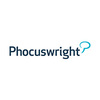OTAs, more than a distribution channel for hotels? | Free PhoCusWright Whitepaper
A new white paper by PhoCusWright, and sponsored by Expedia, paints the role of OTAs as a significant and effective marketing and distribution channel for hotels. One that specifically broadens a hotels reach in attracting new customers, including an international clientele. Online travel agencies (OTAs) have been both coveted and criticized since they rose to prominence in the early 2000s. Representing 13% of global travel gross bookings and growing at 12% annually, OTAs play a pivotal and expanding role in the travel landscape. However, in a climate where suppliers are pushing their direct distribution, OTAs can be seen as just another intermediary in the value chain. This view overlooks the value of OTAs, which goes beyond assisting with the sale of excess inventory during soft demand. OTAs offer suppliers unprecedented reach around the globe and are a valuable marketing tool. As a result many hotel suppli- ers have built a symbiotic relationship with OTAs, benefiting from their influence while managing their own direct distribution as well.
The OTA Proposition
OTAs provide a trusted and effective platform for consumers to dream, shop and buy travel, and share information about their experiences. Their reach includes websites, mobile sites and apps, and call centers. In some cases they also own metasearch companies (Expedia-Trivago, Priceline-Kayak, Odigeo-Liligo).
Online travel agencies play a pivotal role in travel distribution. With gross book- ings exceeding $150 billion in 2013, OTAs now represent 38% of the global online market and 13% of the total market. In the U.S., OTAs have a 15% market share and gross bookings are expected to jump 5-6% annually over the next two years, rates that exceed overall travel market growth. Their influence in accommodations continues to spread. OTAs were responsible for nearly $19 billion in hotel gross bookings in the U.S. in 2013, representing 15% of total hotel sales. A variety of OTA brands serve multiple customer segments – leisure, business and group. They are global in reach and innovative in functionality. They are marketing engines, search engines, booking engines and execution platforms for consumers. OTAs also hold a prominent place in travel information search and multi-device (mobile) applications.
And, while OTAs compete for marketing spend with other search, metasearch and content sites (e.g., Google, Kayak, TripAdvisor, Trivago), these services also act as partners, providing additional reach and distribution. Hoteliers operate in a highly competitive environment. To optimize their asset values they must make effective use of OTAs and other marketing channels. For hoteliers to underestimate the marketing reach of OTAs as both distribution and marketing platforms is a mistake. To be overly reliant on any one channel is also flawed. Hoteliers must strive to strike the right balance to reach multiple segments of the marketplace and optimize the mix of transactions to achieve occupancy and profit targets.
